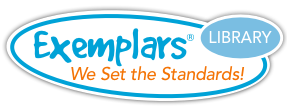Kindergarten - Geometry Unit
The Geometry Unit involves the analysis of two- and three-dimensional geometric figures in order to understand their attributes. Students will answer questions such as—
- How are these two shapes alike? How are they different?
- Why is this shape a triangle? Why is this shape NOT a triangle?
- What shapes do you notice in the flat sides of this tissue box? What shapes do you notice in the flat surfaces of this soup can?
- What words can you use to describe your shape?
- How can you use shapes to form new shapes?
Math Concepts and Skills:
The student analyzes characteristics of two-dimensional shapes and three-dimensional solids to develop generalizations about their properties.
The student:
- identifies two-dimensional shapes (circles, triangles, rectangles, and squares as special rectangles).
- Identifies examples of three-dimensional solids (cylinders, cones, spheres, rectangular prisms and cubes as special rectangular prisms) in the real world.
- identifies two-dimensional parts of three-dimensional objects.
- identifies characteristics of two-dimensional shapes using both informal and formal geometric language.
- sorts and classifies a variety of regular and irregular two- and three-dimensional figures regardless of orientation or size.
- creates two-dimensional shapes using a variety of materials and drawings.
Summative Assessment Task
Students determine the total number of corners on three different shapes.
Students recreate the yellow pattern block shape using the other pattern blocks.
Instructional Tasks/Formative Assessments
Using craft sticks for sides and buttons for corners, students determine how many of each are needed to make three triangles.
Students create two different pattern block shapes using five green pattern blocks.
Students determine the total number of students sitting at different-shaped tables.
Students determine if there are enough paper clips to make two squares.
Students determine if Mary can make two rectangles using 12 craft sticks.
Students determine if the two pictures are alike.
Students determine how Bonnie can sort her buttons.
Students find the total number of sides on three shapes.
Students create rectangles using different amounts of orange pattern blocks.
